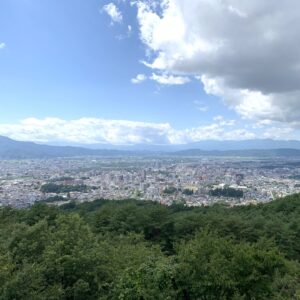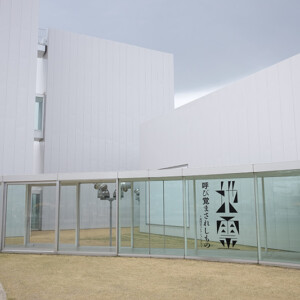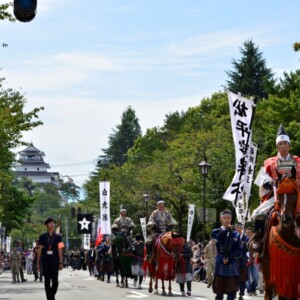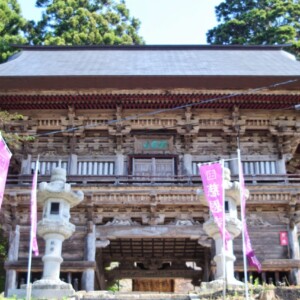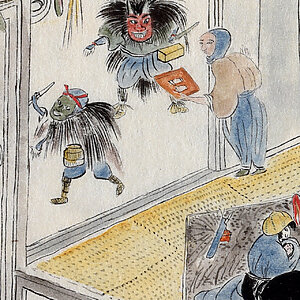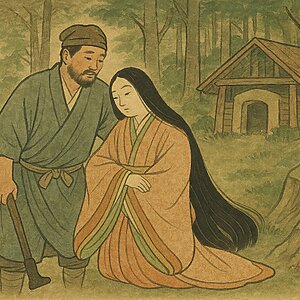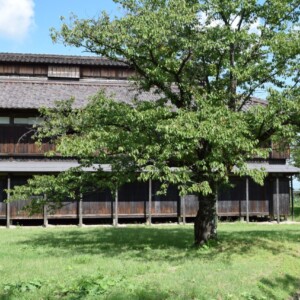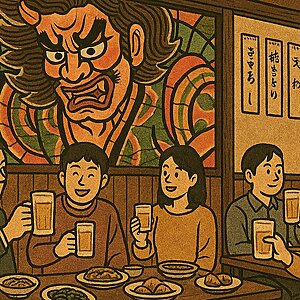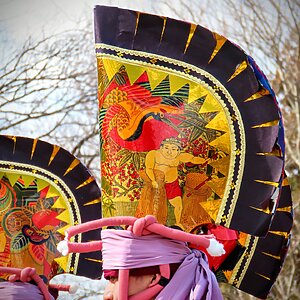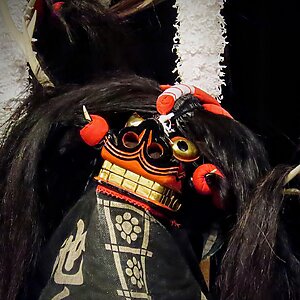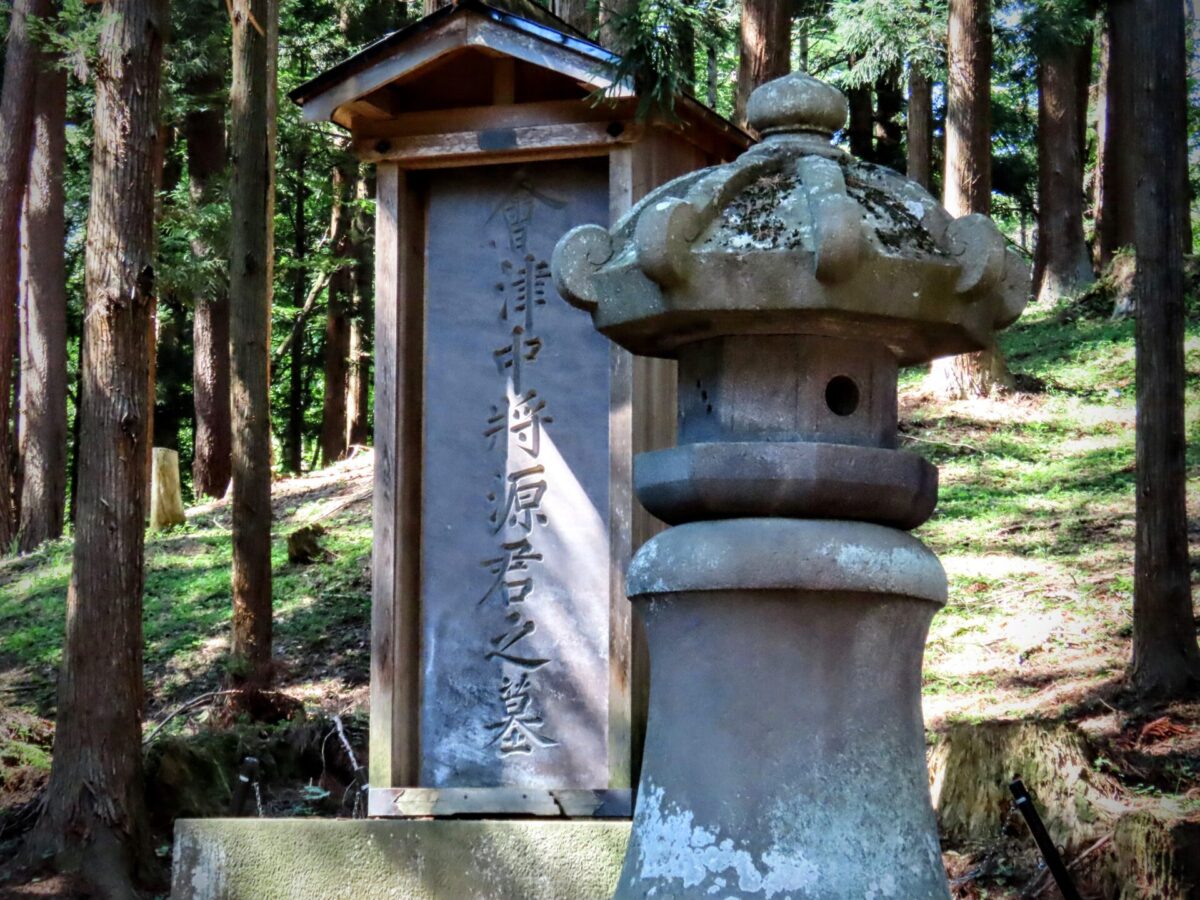
Was it once known as the Nikko of Tohoku? Tsuchizu Shrine, where the guardian deity of Aizu rests (Inawashiro Town, Fukushima Prefecture)
table of contents
Hanitsu Shrine, located in Inawashiro Town, Yama District, Fukushima Prefecture, Masayuki, the first lord of the Aizu domain , and is also a shrine where he is enshrined as a god.
But why is the grave of a person who is considered the guardian deity of the Aizu region located in Inawashiro and not in Aizu-Wakamatsu, where the castle is located? This article will answer this question and explain Tsuchi Shrine.
Hoshina Masayuki, the wise ruler known as the guardian deity of Aizu
Born as the illegitimate son of Tokugawa Hidetada and adopted into the Hoshina family, Hoshina Masayuki was trusted by Tokugawa Iemitsu and supported the shogunate government, while also laying the foundation for the domain's government as the first lord of the Aizu domain.
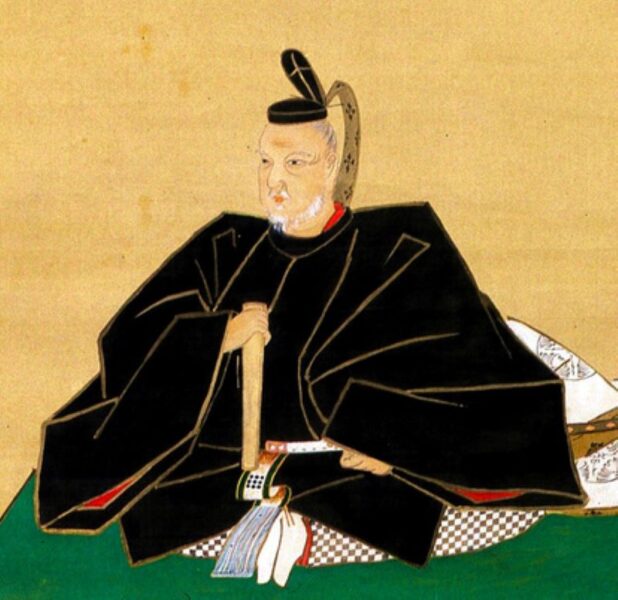
He valued frugality and benevolent governance, and promoted civil government through the establishment of the 15 Aizu Family Precepts, the optimization of annual taxes, the corporation granary system, and pensions. In particular, the 15 Aizu Family Precepts stipulated that a ruler should not be arrogant, should put the people first, and value scholarship and loyalty, which had a major influence on the later Aizu Bushido.
Masayuki also understood the importance of learning and spread an attitude of encouraging learning and education throughout the domain. He was also interested in calendar studies, and highly valued Shibukawa Shunkai's talent, inviting him to Aizu to give lectures on calendar theory.
The name "Tsuchi Shrine" comes from the spiritual title given to Masayuki Hoshina.
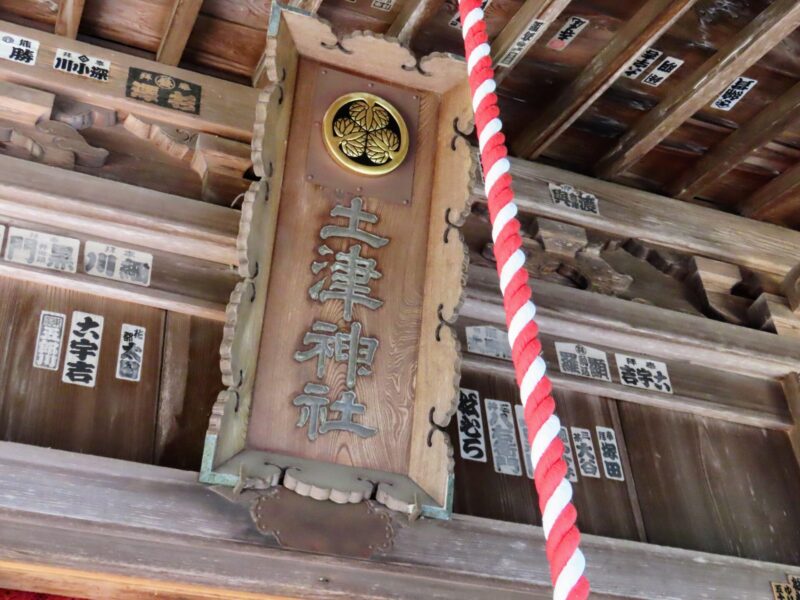
Hanitsu comes from the spiritual name "Hanitsu" given to Hoshina Masayuki, who was devoted to Shinto, when he was imparted the secret teachings of Shinto by Shintoist Yoshikawa Koretari in 1671.
"Tsuchi" (earth) is the origin of the earth and the universe in the five elements theory, "tsu" (tsu) is the "tsu" of Aizu, meaning the lord of Aizu, and represents Masayuki's way of being as a monarch who has mastered the principles of all things.
About the enshrined deity and its deification
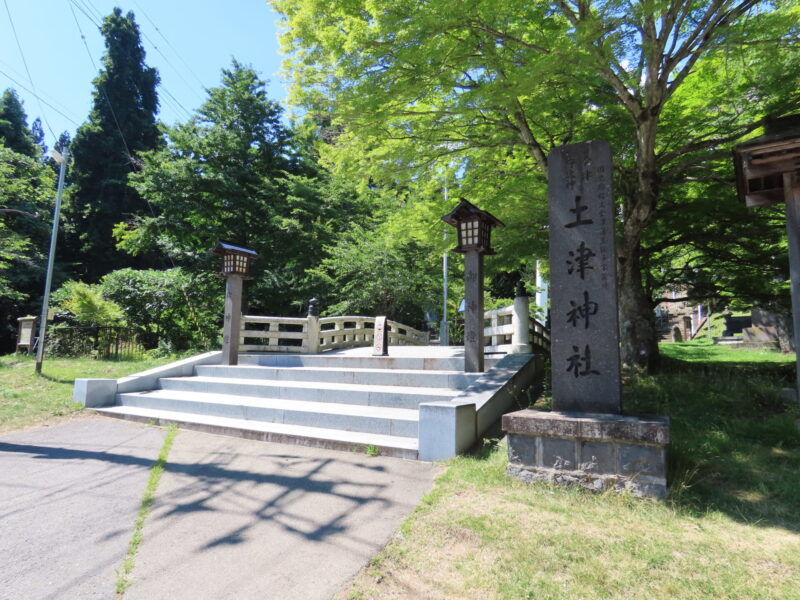
The main deity of Hatotsu Shrine is the first lord of the Aizu domain, Hoshina Masayuki, who expressed his wish during his lifetime to become a branch shrine of Iwagi Shrine, which enshrines the god of Mount Bandai, and serve the gods forever after he died. As a result, he "Hatotsu Spirit God" and came to be worshiped as a god himself.
As per his will, Tsuchi Shrine is a branch shrine of Iwagi Shrine.
Furthermore, Tsuchi Shrine is located northeast (in the direction of evil spirits) from Aizuwakamatsu, where Tsuruga Castle is located, and off evil spirits and protect Aizuwakamatsu.
About the co-deity and guest deities
In addition to the main deity, Hoshina Masayuki, Tsuchi Shrine enshrines seven of the Aizu domain's successive feudal lords as co-deities, excluding the second feudal lord, Masatsune, who was buried in Buddhist rites.
However, the graves of the successive feudal lords, from the second lord Hoshina Masatsune to the ninth lord Matsudaira Katamori, as well as their concubines and children, are located at Innai Gobyo in Ishiyama, Higashiyama-cho, .
Co-shrine deity
- Matsudaira Masayoshi (Tokuo Spirit God) | Third feudal lord of the Aizu domain
- Matsudaira Katasada (Tsuchi no Tsuneyagami) | Fourth feudal lord of the Aizu domain
- Matsudaira Katayoshi (revered spirit) | Fifth feudal lord of the Aizu domain
- Matsudaira Katazumi (the spirit of Sadaaki) | The sixth feudal lord of the Aizu domain
- Matsudaira Yoshishu (Imperial Deity) | Seventh Lord of the Aizu Domain
- Matsudaira Katayoshi (Loyal and Proud Spirit) | Eighth Lord of the Aizu Domain
- Matsudaira Katamori (Loyal Spirit) | 9th Lord of the Aizu Domain
Although the shogunate recommended that Hoshina Masayuki use the Matsudaira family name and the hollyhock crest, he never forgot the gratitude he felt for the Hoshina family that had raised him, and continued to use the Hoshina family name throughout his life. After that, from the third generation, Masahiro, the Matsudaira family name and the hollyhock crest were used, and the status of a related domain was established.
Takara Tamatari Daimyojin is enshrined as a guest deity in the adjacent hall Takeuchi no Sukune, a legendary loyal retainer who appears in the Kojiki and Nihon Shoki , and is a symbol of the loyalty he has shown in the service of successive emperors from Emperor Ojin onwards.
Takara Tamatari Daimyojin is also the enshrined deity of the local Iwagi Shrine, and it is said that Tsuchi Shrine is considered a branch shrine of Iwagi Shrine, and that he was enshrined in recognition of the loyalty of Masayuki and his retainers.
Tsuchi Shrine was once so magnificent that it was called the "Nikko of Tohoku."
After Hoshina Masayuki died in 1673, a temporary shrine was built by order of the second feudal lord, Hoshina Masatsune, and the main shrine building was completed in 1675.
Tsuchi Shrine, with its majestic shrine building built in accordance with ancient formalities, complete with a Kanjimon gate, corridors, and lattice fence, was such a magnificent building that it was compared to Nikko Toshogu Shrine, and it is said that it later came to be called "Nikko of Tohoku," "Oku-Nikko," and "Ura-Nikko Shrine."
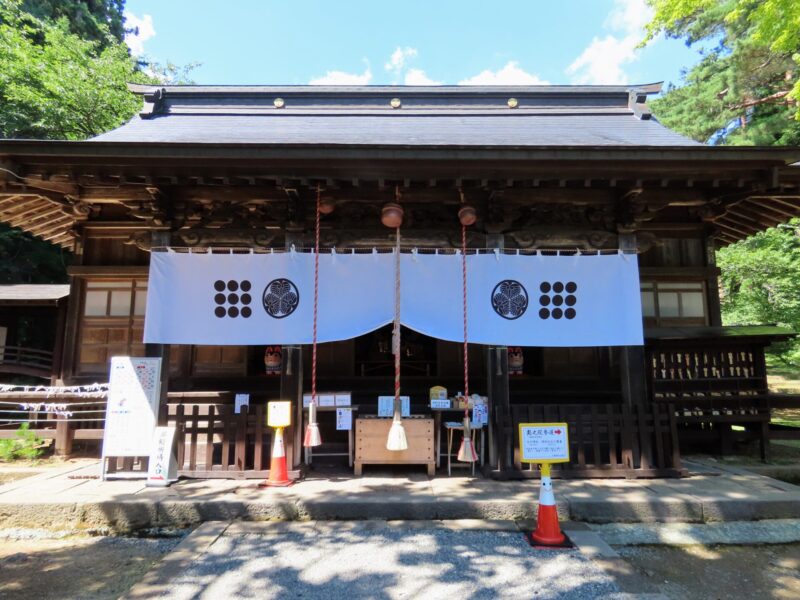
However, the main shrine building was burned down during the Boshin War, and the current building was rebuilt in 1880. However, the shrine as a whole still exudes the atmosphere and dignity of the past.
Okunoin (Masayuki Hoshina's grave)
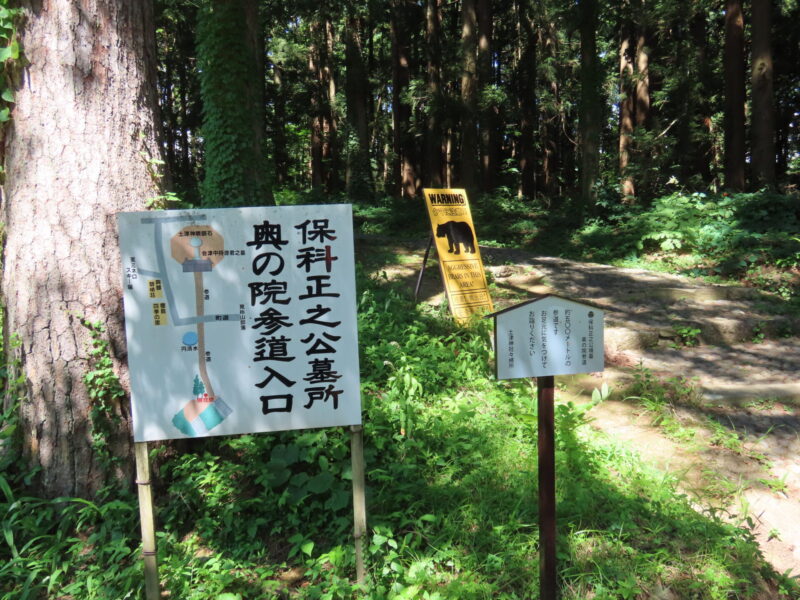
The grave of Hoshina Masayuki, which is the inner sanctuary, is located about 500m up the mountain path from the side of the worship hall.
There is a road that runs very close to the cemetery, so you can go back to the parking lot and drive up close. There are signs warning of bears, so it may be best not to go too far.
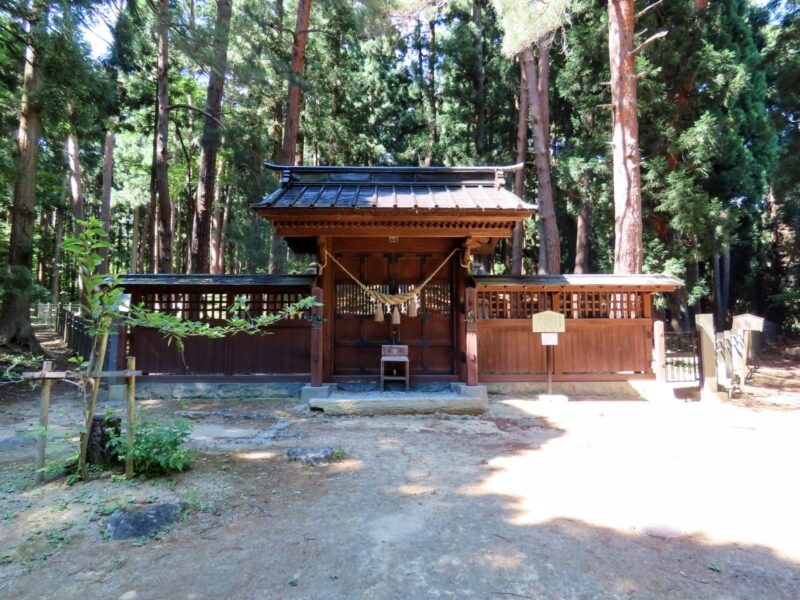
There is a space next to the cemetery that looks like it could fit two or three cars, and from here you can see the cemetery right in front of you.
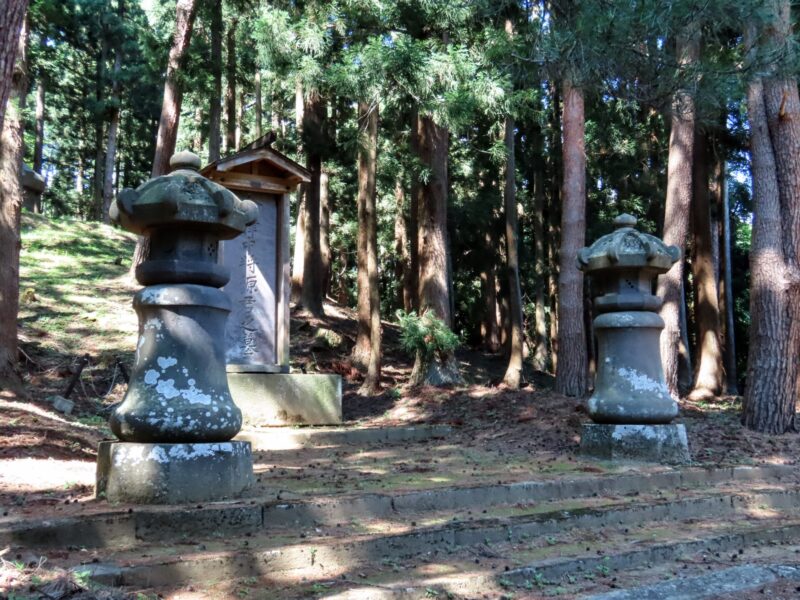
The graveyard is fenced off and off-limits, but you can get a glimpse of the inside from the side of the gate. The tombstone is engraved with the words "Tomb of Aizu Chujo Minamoto-kun."
The small hill you can see in the background is the tomb of Hoshina Masayuki, and at the top of the mountain there is a shrine stone with the inscription "Tsuchigami Tomb Shrine Stone."
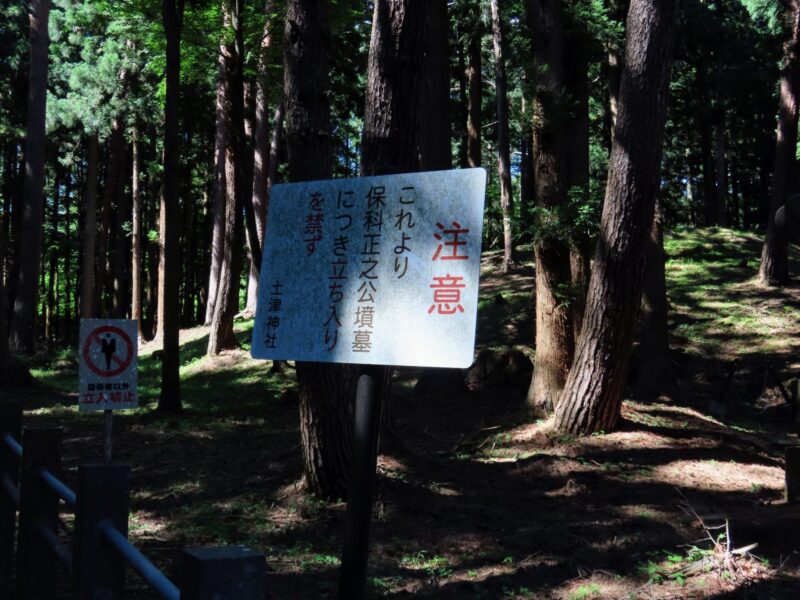
There are many "No Trespassing" signs in the surrounding area, making it clear that this is sacred land.
Tsuchi Shrine <Information>
- Name: Hanitsu Shrine
- Address: 3 Minesan, Inawashiro-machi, Yama-gun, Fukushima Prefecture, 969-3102
- Phone number: 0242-62-2160
- Official URL: https://hanitsujinja.jp/



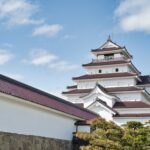
![The pride of the castles in the six Tohoku prefectures: "The largest in Michinoku"! Yamagata Castle, a tribute to the glory of the Mogami clan [Yamagata City, Yamagata Prefecture] Yamagata Castle Catch](https://jp.neft.asia/wp-content/uploads/2025/07/0da2b7be5bcd3042f684d56ea93fda8b-150x150.jpg)
![It's so big that the main castle is hazy and you can't see! Yamagata Castle, known as Kasumi Castle [Yamagata Prefecture] Yamagata Castle's main castle, Ichimonji gate](https://jp.neft.asia/wp-content/uploads/2023/08/3261071_m-150x150.jpg)
![[Inawashiro Town, Fukushima Prefecture] “Tenkyokaku” is a Western-style building loved by the imperial family! Let's wear a Meiji dress and become a lady! illumination](https://jp.neft.asia/wp-content/uploads/2018/08/2d9ed840da1aa01217172f486b7988c0_s-150x150.jpg)
![[Inawashiro Town, Fukushima Prefecture] I went to Inawashiro Herb Garden for an autumn Instagram photo! PXL_20221011_065729791](https://jp.neft.asia/wp-content/uploads/2022/10/PXL_20221011_065729791-150x150.jpg)
![Urabandai is attractive for its beautiful scenery created by the powerful volcanoes and the beautiful lakes and small lakes [Fukushima Prefecture] Urabandai scenery](https://jp.neft.asia/wp-content/uploads/2023/02/22387665_m-150x150.jpg)
![[Inawashiro Town, Fukushima Prefecture] Just like the original scenery of Japan! Enjoy cherry blossom trees along the Kanonji River and Inawashiro gourmet food Kannonji River 1](https://jp.neft.asia/wp-content/uploads/2023/03/fc018535fdcbf5d64ee822fbb85bac67-150x150.jpg)
![[Inawashiro Town, Fukushima Prefecture] Get in touch with nature at Bandai Plateau Minamigaoka Farm IMG_1004](https://jp.neft.asia/wp-content/uploads/2023/07/IMG_1004-150x150.jpg)
